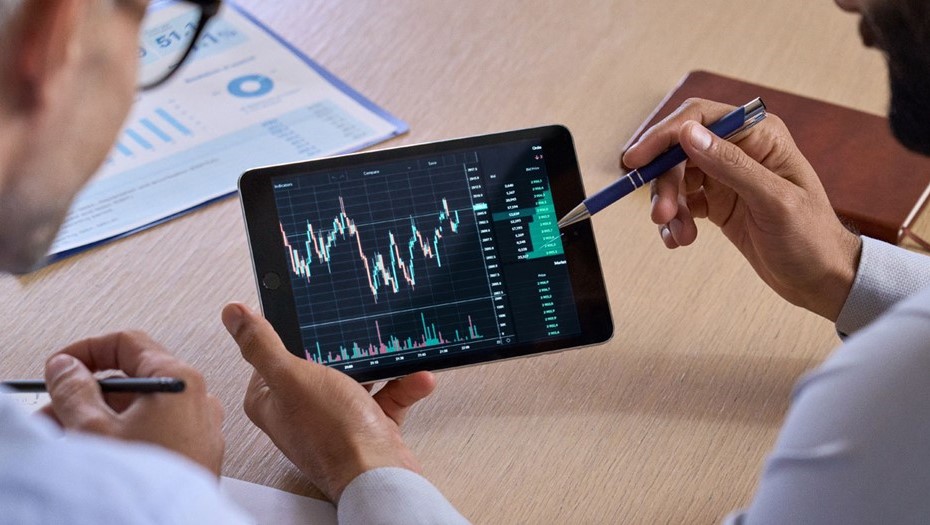How to Choose a Broker for Stock Trading
Introduction
Choosing a broker is one of the first and most crucial steps for any investor or trader. Selecting a reliable partner means ensuring access to necessary tools, transparent trading conditions, quality customer support, and the protection of funds. This article provides an in-depth examination of key criteria for evaluating brokers, offers practical recommendations for selection, as well as comparative reviews of popular platforms and successful case studies.
1. Commission Conditions and Fees
1.1 Transaction Fees
The transaction fee is the primary source of revenue for brokers and directly impacts the net profit of investors. In Russia, typical rates for trades involving stocks and bonds range from 0.01% to 0.05% of the turnover, while in the futures market, they are a fixed 20–50 ₽ per contract. For active traders, even a small difference in rates significantly affects results, prompting the query "where are the lowest broker commissions?"
1.2 Account Maintenance Fees
Some brokers charge a subscription fee for account maintenance or access to advanced market data (Level 2). In other cases, these fees are offset by higher transaction commissions. Conservative investors are advised to choose a broker with free maintenance and moderate fees to avoid hidden costs and simplify the calculation of overall returns.
1.3 Deposit and Withdrawal Fees
The fee for funding an account via bank transfer can reach up to 0.5%, while withdrawal fees range from 0.1% to 0.3%. Optimal brokers offer free deposits and withdrawals to bank cards, e-wallets (Qiwi, ЮMoney), and payment systems. This is crucial for regular capital movement and answers the query "how to withdraw money from a broker."
1.4 Example of Cost Calculation
An investor with capital of 1,000,000 ₽ makes 20 trades totaling 5,000,000 ₽. At a commission rate of 0.03%, they would pay 1,500 ₽, whereas at 0.01%, the fee would only be 500 ₽. The savings of 1,000 ₽ demonstrate why choosing a broker with low fees is critical for effective trading.
2. Trading Platform and Technology
2.1 Desktop, Web, and Mobile Solutions
Desktop terminals (QUIK, TWS, MetaTrader) offer extended functionality, customizable charts, and scripts, along with high connectivity stability. Web platforms provide convenient access without installation, while mobile applications ensure oversight of positions when away from home. The choice depends on working style and addresses the queries "best trading platform" and "broker's mobile application."
2.2 Order Execution Speed
For active traders and scalpers, latency is critically important. Optimal platforms achieve response times of less than 100 ms. It is recommended to test execution speed through a demo account to ensure reliable connectivity and the absence of delays.
2.3 API and Automation
Strategy automation requires the availability of an API supporting REST and WebSocket. It is beneficial if the broker provides ready-made libraries for Python, Java, and C#. This allows for the integration of custom algorithms and robots, addressing the intent "broker API for automated trading."
3. Regulation, Licences, and Security
3.1 Licences and Membership in Self-Regulatory Organisations
A reliable broker must have a licence from the Central Bank of Russia and be a member of a self-regulatory organisation. These factors guarantee compliance with strict regulatory requirements, procedural adherence to regulations, and the protection of client interests in conflict situations.
3.2 Fund Insurance
Participation in the system for insuring brokerage accounts (up to 1.4 million ₽) or voluntary asset insurance enhances the level of capital protection. This is a significant indicator of reliability and addresses the query "broker account insurance."
3.3 KYC and AML
The "Know Your Customer" (KYC) and Anti-Money Laundering (AML) procedures demonstrate the legitimacy and security of the broker. Strict monitoring of documents and transactions helps prevent fraud and strengthen client trust.
4. Deposit and Withdrawal of Funds
4.1 Funding Methods
Funding through bank transfer, cards, and e-wallets (Qiwi, ЮMoney) should be free and prompt. The convenience and speed of operations impact the effectiveness of portfolio management and address the intent "broker account funding fees."
4.2 Withdrawal Times and Minimum Amounts
Withdrawals to bank cards take 1–3 business days, while to e-wallets, they occur instantly. Minimum withdrawal amounts range from 100 ₽ to 10,000 ₽. Transparent limits and the absence of hidden fees facilitate cash flow planning.
4.3 Multi-Currency Support and Hedging
Support for multiple currencies (USD, EUR, GBP, KZT) allows for trading foreign instruments and hedging currency risks. This is crucial for diversified strategies and trading international assets, addressing the intent "currency trading with a broker."
5. Training, Analytics, and Research Tools
5.1 Educational Programs
A quality broker offers education through demo accounts, webinars, online courses, and articles. For beginners, mastering the terminal and basic strategies without risk is essential, addressing the queries "broker demo account" and "trading webinars."
5.2 Real-Time Analytics
Economic calendars, news, technical indicators, and screeners are essential tools for decision-making. The broker’s collaboration with third-party providers (Bloomberg, TradingView) enhances the quality of analytics and addresses the intent "market analytics from a broker."
5.3 Research Reports
Weekly and monthly sector reviews, asset forecasts, and portfolio models help form long-term strategies, addressing the intent "broker research."
6. Types of Accounts and Their Features
6.1 Regular Brokerage Account
A basic account for trading stocks, bonds, ETFs, and futures on Russian platforms. There are no tax advantages, but there are no restrictions on volumes and types of instruments, addressing the query "regular brokerage account."
6.2 Individual Investment Account (IIS)
An IIS provides a tax deduction of 13% on invested amounts up to 400,000 ₽ per year (maximum 52,000 ₽ deduction) or exemption from personal income tax on profits, provided the account is maintained for more than three years. This is an attractive tool for long-term investors, addressing the intent "IIS conditions."
6.3 Forex and CFD Accounts
Leverage up to 1:1000 and a wide selection of currency pairs are available on special accounts. The high level of risk makes these accounts unsuitable for conservative investors but interesting for experienced speculators, addressing the intent "broker's margin conditions."
6.4 Brokerage Services (BOS)
An expanded service package — trust management, personal manager, tax support — is suitable for investors with capital starting from 1 million ₽, addressing the intent "brokerage services what it is."
7. Technical Support and Customer Service
7.1 Multichannel Support
Availability of a telephone line, chat, email, and messengers around the clock in Russian and English ensures uninterrupted communication, addressing the query "broker technical support 24/7."
7.2 Response Speed
A first-response time of 5–10 minutes and resolution of most queries within an hour indicate a high level of service, addressing the intent "customer support response time."
7.3 Reputation and Reviews
Independent reviews on specialised forums, social media, and among peers help assess the actual level of service and reliability, addressing the intent "broker reviews."
8. Comparative Analysis and Practical Cases
8.1 Best Brokers for Beginners
“Tinkoff Investments”, “Sberbank Investments” and “VTB My Investments” offer user-friendly interfaces, demo accounts, education, and support, which is ideal for starting out.
8.2 Best Brokers for Active Traders
“Finam”, “Otkritie Broker” and “Interactive Brokers” attract traders with low commissions, powerful platforms, and API support for algorithmic trading.
8.3 Cases of Successful Choices
Ivan, a beginner, opened an IIS with “Tinkoff”, obtained a tax deduction of 52,000 ₽, and mastered the basics of investing. Olga, a trader, chose “Interactive Brokers” for arbitrage between exchanges, reducing slippage losses to 0.5 points.
8.4 Analyst Recommendations
Experts advise conservatives to focus on licenses and transparency of conditions, while active traders should prioritise execution speed and automation capabilities for their strategies.
8.5 Action Plan for Investors
1. Determine financial goals, time horizon, and trading style. 2. Compile a list of key criteria (commissions, platform, security). 3. Test demo accounts, compare conditions and analytics. 4. Study reviews and the reputation of brokers on specialised resources. 5. Open an account, start small, and then gradually increase volumes and diversify assets.
Conclusion
When choosing a broker, it is essential to consider a comprehensive range of factors: commissions, platforms, security, deposits/withdrawals, and service quality. For conservative investors, reliability and transparency of conditions are priorities, while active traders need execution speed and automation capabilities. Regular monitoring of conditions and comparing offers will help timely transition to a more advantageous broker and maintain effective trading on the stock exchange.




